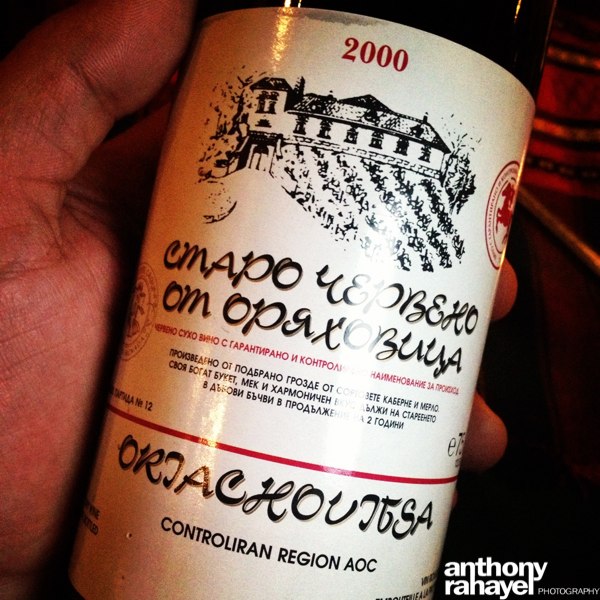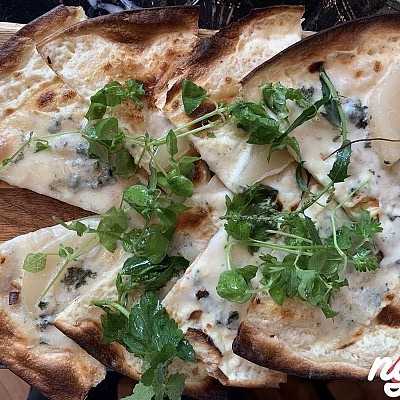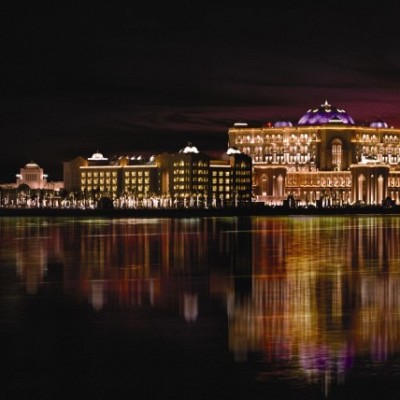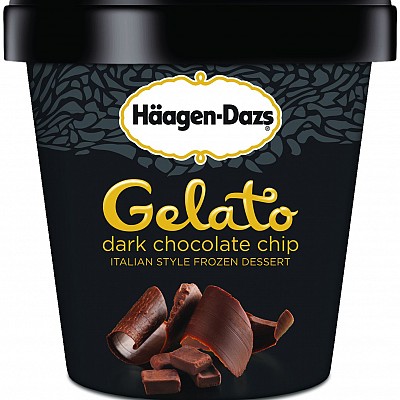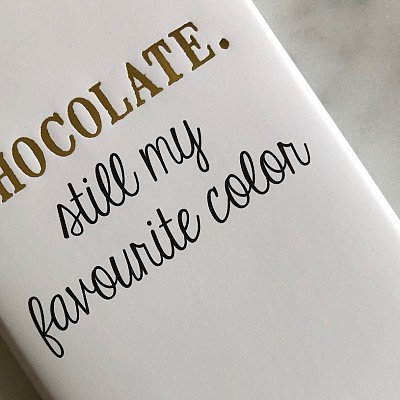It's 8am, on a sunny Sunday morning. I was drinking coffee and eating a Bulgarian cheese sandwich in the calmest airport on earth. I am literally alone in this huge terminal waiting for my plane to Paris CDG back to Beirut. A quick four-day trip where I learned a lot of interesting things about a new country and a society I didn't know a thing about.
Bulgaria, is a country located in Southeastern Europe. It is bordered by Romania to the north, Serbia and Macedoniato the west, Greece and Turkey to the south and the Black Sea to the east. With a territory of 110,994 square kilometres, Bulgaria is Europe's 14th-largest country. Its location has made it a historical crossroad for various civilizations and as such it is the home of some of the earliest metalworking, religious and other cultural artifacts in the world. Irena, my host, welcomed me in one of the emptiest airports I've ever visited. She made my weekend interesting and comfortable enough … I also met a new good friend and colleague, Dr. Alfredo. I spent a great time with him in Bulgaria. Not only was he a good friend, he acted as my lighting assistant as he helped me with appropriate lighting provided by his Samsung Galaxy. He accompanied me in all my culinary experience, making sure I didn't forget to take pictures of each plate...
Sofia is the capital and largest city of Bulgaria and the 15th largest city in the European Union with a population of 1.2 million people. It is located in western Bulgaria, at the foot of Mount Vitosha and approximately at the center of the Balkan Peninsula. Bulgaria is a country with a tormented past where many kingdoms ruled trying to impose their cultures and believes. You feel the Turkish empire five hundred years domination as well as the fifty years of communism that didn't help a lot in flourishing this country living a hard economical period. Meeting the people and getting to know the locals more, their generosity and welcoming puts you at ease in this beautiful paradise full of potential resources.

Three days might have not been enough but I think I have learned some interesting things about this city, that I would love to share with you. An adventurous experience indeed full of culinary wonders and discoveries.
It all started with a traditional night at Edno Vreme (in the old days) Restaurant on Lake Ariana around the city center. Local food, local music, local singers, local band in a nice setup.
Heavy food indeed:
lamb and pork meat cooked with their fat, marinated in lots of spices and hot pepper. A new discovery for me even though its very close from Turkish food. The salad is a complication of Bull's heart pink tomato, cucumbers, bread loafs, yogurt mix, red and green pepper with many other things: That was something I liked. The desserts are close to the Turkish ones but with even more sugar syrup making them too sweet for my taste. Tonight I learned about the Bulgarian salad the Shopska that is a traditional Bulgarian cold salad popular throughout the Balkans and Central Europe. It is made from tomatoes, cucumbers, onions, raw or roasted peppers, sirene (white brine cheese), and parsley. It's exactly like the Greek salad but with cubes cut smaller, only one black olive on top instead of many in the Greek one and served with no dressing, giving you the choice to add sunflower oil and apple vinegar to your choice.
The first morning, Irena who wanted us to taste the traditional breakfast stopped at the first coffee shop to buy some "Banitza":
Banitsa is a traditional Bulgarian food prepared by layering a mixture of whisked eggs and pieces of cheese between filo pastry and then baking it in an oven. Traditionally, lucky charms are put into the pastry on certain occasions, particularly on New Year's Eve. These charms may be coins or small symbolic objects. Banitsa is served for breakfast with plain yogurt, ayran, or boza. It can be eaten hot or cold. Some varieties include banitsa with spinach or the sweet version, banitsa with milk or pumpkin. It reminded me of the Arabic wrapped sweets we have in Lebanon or the wrapped cheese rolls.
We started this early day with sunrise at 7am preparing for the three hours trip to Arbanasi.
Arbanasi is a village in Veliko Tarnovo Province of central northern Bulgaria. It is known for the rich history and large number of historical monuments, such as 17th and 18th century churches and examples of Bulgarian National Revival architecture, which have turned it into a popular tourist destination. Arbanasi has a population of 291. It lies at 400 meters above sea level. We reached Rachev Hotel Residence located in the western part of the village of Arbanasi, right next to the Assumption Monastery, 4 km away from Veliko Turnovo on the road to Gorna Oryahovitsa.
A nice village and resort worth visiting.
Here I ate again the Bulgarian salad and noticed that olive oil is not a trend around here. They use Sunflower oil everywhere even for salads, the village guide later-on explained that its cheaper than olive oil... The resort's food is simple and tasty. We had chicken with spinach and black rice and another plate of Chicken filled with white cheese; delicious. That night was a typical village dinner at Izvora folk restaurant: Bizarre, new and enjoyable experience with local wines, local produces, local preparations in a local ambiance. Pork was the night's title. Grilled pork followed by grilled mixed casserole - The Pork kavarma with pork meat, onions, mushrooms, pepper, tomato and egg-and of course the famous Bulgarian salad I ate four times during this trip.
Tonight was my biggest discovery understanding all important dishes and their composition:
- Rakia: is an alcoholic beverage that is produced by distillation of fermented fruit; it is a popular beverage throughout the Balkans. Its alcohol content is normally 40% alcohol, but home-produced rakia can be stronger (typically 50% to 60%).
- Purlenka bread
- Sunflower oil is part of the culture, used a lot in cooking and even in salads.
- Kacamak: The dish is made of cornmeal. Potatoes, white cheese is sometimes added. Similar to the Abkhazian ab?sta, Adige mam?s, Italian polenta and Romanian m?m?lig?, it is prepared by boiling the mixture until it is thick or runny, depending on taste, and then mashing while the pot is still on the fire. Although it was once regarded as a poor man's food, it has grown into the everyday cuisine and is often found in restaurants.
A local red wine:
Saturday, the lecturing day was over and it was time to move to Velico Tornovo, the old capital.
There we met a gentle guide who toured us around and offered me a Bulgarian souvenir coin to add to my collection. The church, the castle, the old souk and the history of Bulgaria were all on the menu. I asked her about everything I was curious to know about and was glad to be helped with a smile. A rose cologne smell in a carved wooden flacon, a souvenir offered by Irena and here we are, back to the capital with Mario: Mario the craziest driver in Bulgaria took us back in less than an hour's expected. A very nice guy, always smiling and happy, telling us stories in Bulgarian all the way back that I didn't understand a thing about. I had to move my head with a smile of approval. The only thing I am sure about is that his car is a BMW and that he is a car drifter. By the way Bulgarians are known to move their heads for approval left and right as we do for denial.
Snickers Dark found at a gas station is delicious:
It’s a good bar. I found the dark chocolate yummy. It tastes like good dark chocolate ... it’s creamy, a little dry a little smoky and is able to hold up to the peanuts of the bar. The darkness of the chocolate is less sweet than the regular bar and actually supports the true peanut flavors. However, the dark chocolate does overpower the caramel. The caramel texture still comes through, but the salty sugar notes are completely lost. I don’t think that’s such a bad thing.

Before going to the hotel we passed in front of Planet and Tequilla, the two major and most important clubs in the capital as Mario suggested. He insisted we spend our evening there and it was a great choice: Thank you Mario. Food in Bulgaria: I honestly didn't like the food much in this country. All meat dishes are served over cooked making them dry, sunflower oil is not that nice in salads, lamb is too fat and greasy, meat mixes are too spicy for my taste, the Banitsa needs more flavor and desserts are over sweet. Sorry! That is my personal opinion.
On another hand I really liked:
Their simple salad, the local beer and the chicken dishes of the Rachev hotel. The Metropolitan Hotel, this trip's last stop was good: finally a good hotel! Finally a pleasant experience and a good night's sleep. After visiting the mall near the hotel and having to run the highway like fools, the Sofia week-end came to an end. Traveling on Bulgaria Air's Embraer 190 back to Paris then on board the MEA to Beirut. London, Chateaux de la Loire, Arbanasi... a ten-day long trip around Europe's exciting destinations.
What's next? More coming next month...


















